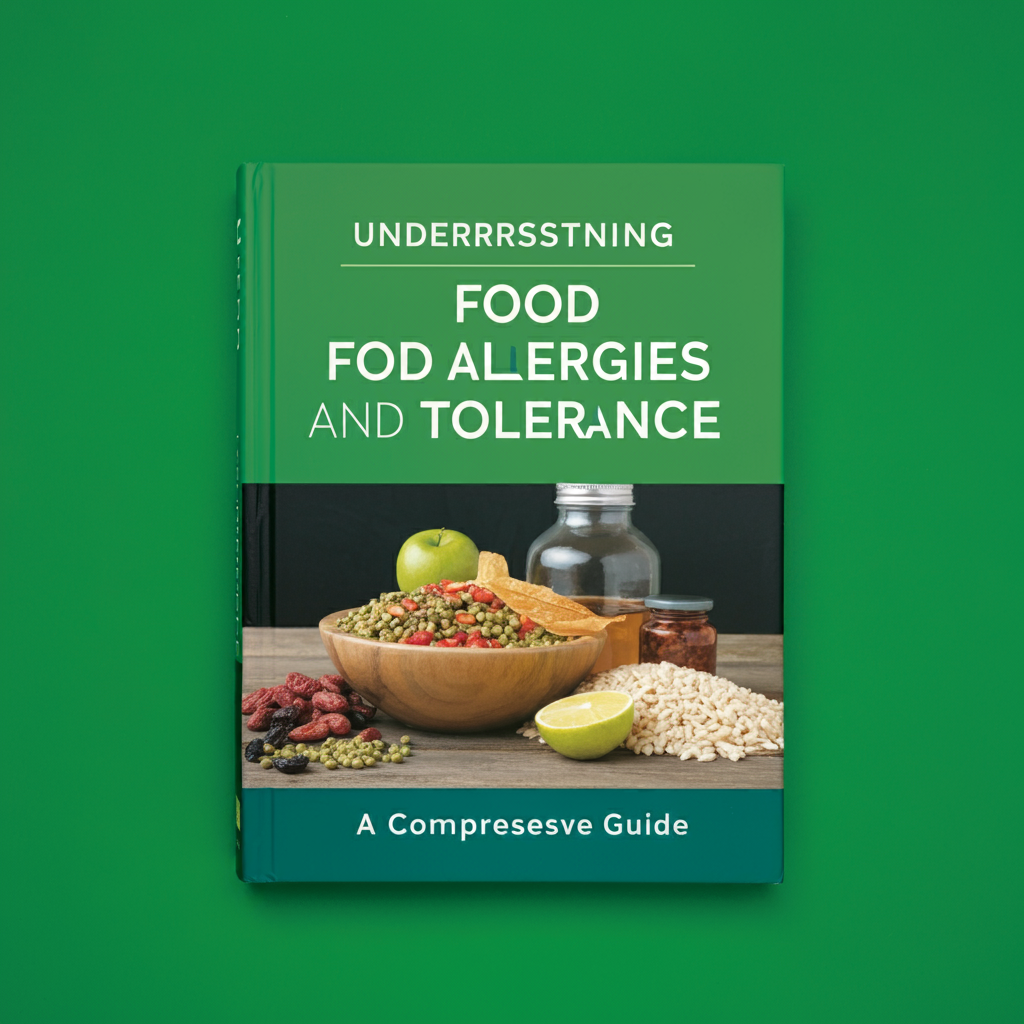

Understanding Food Allergies and Tolerance: A Comprehensive Guide.
Food allergies and intolerances are becoming increasingly prevalent in today’s society. From severe allergic reactions to dietary sensitivities, understanding these conditions is crucial for maintaining health and well-being.
This blog post will delve into the intricacies of Understanding Food Allergies and Tolerance: A Comprehensive Guide. Their symptoms, distinctions, diagnosis, treatment, and how individuals can manage their condition effectively. We’ll also explore the role dietary changes and awareness play in living with food allergies and intolerances.
What Are Food Allergies?
Food allergies, allergic reactions, immune Response food allergies involve an immune response triggered by certain foods, wherein the body’s immune system mistakenly identifies a particular food protein as harmful. This results in the production of antibodies called Immunoglobulin E (IgE). When a person with a food allergy consumes the offending food, the immune system responds, leading to various allergic reactions that can range from mild to severe.
Common Food Allergens
The most common food allergens include:
- Peanuts
- Tree nuts
- Milk
- Eggs
- Fish
- Shellfish
- Soy
- Wheat
According to the Food Allergy Research & Education (FARE), approximately 32 million Americans suffer from food allergies, with severe allergic reactions leading to anaphylaxis, which can be life-threatening.
What Are Food Intolerances?
Food intolerances, non-allergic reactions, digestive Issues food intolerance, on the other hand, does not involve the immune system. Instead, it typically occurs when a person has difficulty digesting certain foods or food components, leading to uncomfortable symptoms. This may stem from enzyme deficiencies, sensitivities to food additives, or reactions to naturally occurring chemicals in foods.
Common Food Intolerances
Some common food intolerances include:
- Lactose intolerance (difficulty digesting lactose, the sugar in milk)
- Gluten intolerance (sensitivity to gluten, found in wheat, barley, and rye)
- Fructose intolerance (difficulty digesting fructose, a sugar found in fruits and certain vegetables)
- Histamine intolerance (reaction to histamine in certain foods) Unlike food allergies, food intolerances usually do not lead to severe reactions or anaphylaxis. However, they can still significantly affect an individual’s quality of life.
Symptoms of Food Allergies and Intolerances
food allergy symptoms, food intolerance Symptoms while food allergies and intolerances can produce similar gastrointestinal symptoms, they can lead to some distinct differences. Here are the common symptoms associated with each:
- Hives or Eczema: Skin reactions such as hives, redness, or swelling.
- Respiratory Issues: Trouble breathing, wheezing, nasal congestion, or throat tightening.
- Gastrointestinal Problems: Stomach pain, nausea, vomiting, or diarrhea.
- Anaphylaxis: A severe, life-threatening reaction that requires immediate medical attention.
Symptoms can include difficulty breathing, a rapid pulse, a drop in blood pressure, and loss of consciousness.
Symptoms of Food Intolerances.
- Digestive Issues: Bloating, gas, cramps, diarrhea, or constipation.
- Headaches or Migraines: Frequent headaches may result from food intolerances due to compounds in food.
- Fatigue: Chronic fatigue can be linked to food intolerance.
- Skin Reactions: While less common, some individuals may experience skin rashes or irritations.
How Are Food Allergies Diagnosed?
Diagnosing food allergies, allergy testing If you suspect you or a loved one has a food allergy, consulting a healthcare professional is essential. The diagnosis process typically includes:
- Medical History: The doctor will ask about symptoms, family history, and dietary habits.
- Physical Examination: A physical check for signs of allergic reactions may be conducted.
- Allergy Testing: – Skin Prick Test: A small amount of allergen is introduced into the skin, and reactions are observed. – Blood Tests: Measurements of specific IgE antibodies in the blood can indicate allergies.
- Oral Food Challenge: In some cases, a supervised test may involve consuming the suspected allergen in a controlled setting.
How Are Food Intolerances Diagnosed?
Diagnosing food intolerances, sensitivity testing Diagnosing food intolerances can often be more challenging than allergies.
Typical evaluation methods include:
- Food Diary: Keeping a detailed record of foods consumed and any symptoms experienced can help identify triggers.
- Elimination Diet: Removing suspected foods from the diet for a period, then gradually reintroducing them can reveal intolerances.
- Lactose Tolerance Test: This test measures the body’s reaction to lactose consumption.
- Hydrogen Breath Test: This test assesses how the body digests certain sugars, like fructose or lactose.
Living with Food Allergies: managing food allergies, avoiding allergens Managing food allergies involves being proactive and informed about what you eat and the potential allergens in food.
Here are some strategies:
- Read Labels: Always check for allergen warnings on food packaging. Look for terms like “may contain” or “processed in a facility with.
- Inform Others: When dining out or attending social events, communicate your allergies clearly to servers and hosts.
- Carry Emergency Medication: If you have severe allergies, carrying an epinephrine auto-injector (e.g., EpiPen) is vital for emergency situations.
- Educate Others: Teach your family and friends about your allergies and how they can help you stay safe.
Living with Food Intolerances: managing food intolerances, dietary adjustments While food intolerances may not be life-threatening, they can affect your quality of life if not managed appropriately.
Here are some tips for managing food intolerances:
- Identify Triggers: Keep a food diary to pinpoint which foods cause unpleasant symptoms, and work with a healthcare provider for guidance.
- Modify Your Diet: Create a balanced diet that avoids triggering foods while ensuring you’re getting enough nutrients.
- Consult a Dietitian: A registered dietitian can help you navigate your dietary needs, focusing on nutrition while avoiding problematic foods.
- Explore Alternatives: Many substitutes are available for common food intolerances, like lactose-free dairy products or gluten-free grains.
The Role of a Balanced Diet in Food Allergies and Intolerances: balanced diet for allergies, nutrition for food intolerances
A balanced diet can help individuals manage food allergies and intolerances by ensuring they meet their nutritional needs without consuming problematic foods. Consider the following:
Symptoms of Food Allergies
- Explore New Foods: Embrace a variety of nutrient-rich foods that fit within your dietary restrictions.
- Incorporate Whole Foods: Focus on whole, unprocessed foods, such as fruits, vegetables, whole grains, nuts, seeds, and legumes.
- Nutritional Supplements Consult with a healthcare provider to determine if supplements are necessary to fill any gaps in your diet.
Conclusion Food allergies and intolerances can significantly impact individuals’ lives, requiring heightened awareness and careful management. Understanding the distinctions between allergies and intolerances, along with recognizing symptoms and effective strategies for living with these conditions, is crucial for maintaining health and well-being. Through education, open communication, and making informed dietary choices, individuals can navigate their food-related challenges and lead fulfilling lives. Whether through eliminating certain foods or exploring new nutritional avenues, the journey toward managing food allergies and intolerances is a personal one, but it is achievable with the right approach and support.
Call to Action if you or someone you know struggles with food allergies or intolerances, consider consulting a healthcare professional or registered dietitian for personalized advice. Staying informed and making dietary choices that consider one’s health needs can lead to a happier, healthier life.






